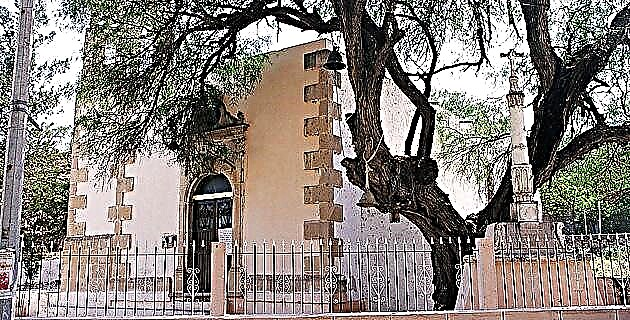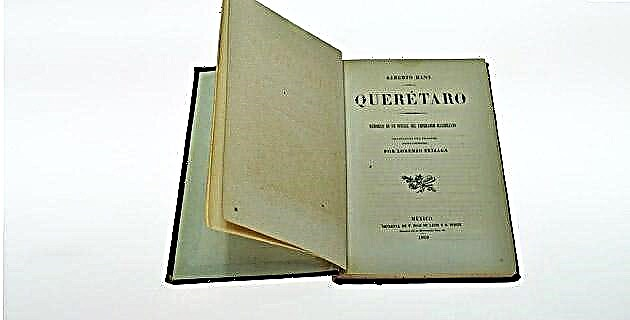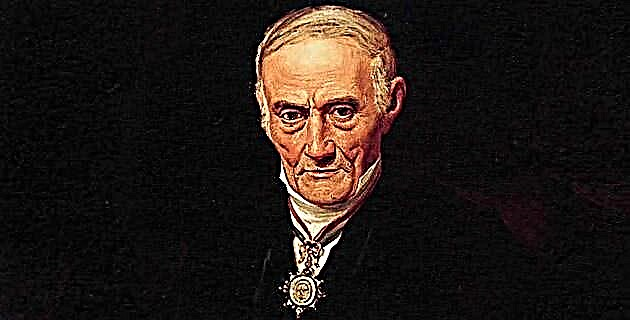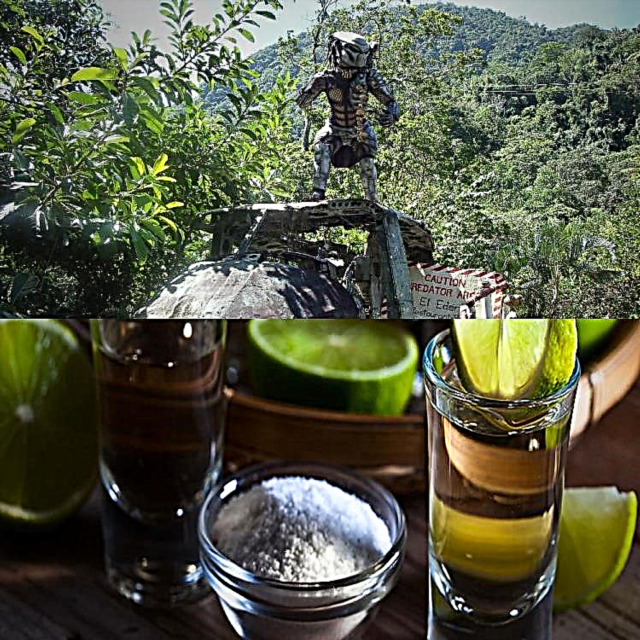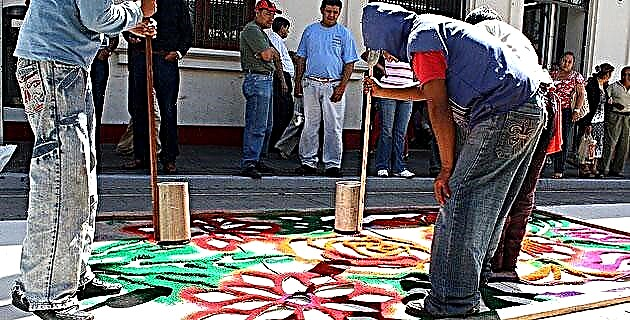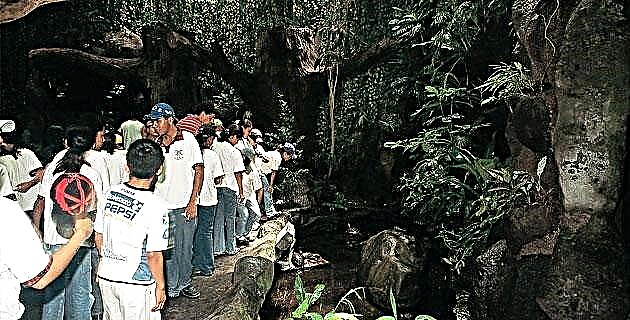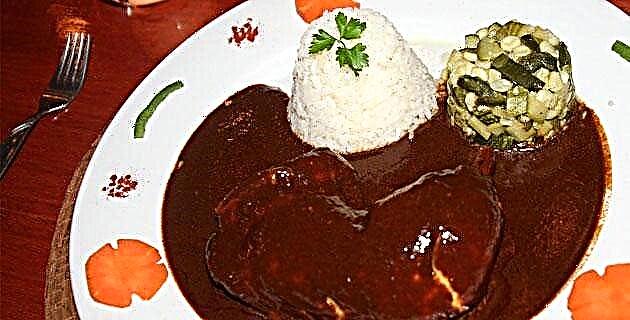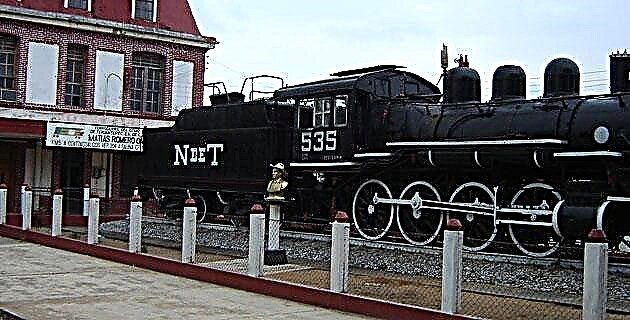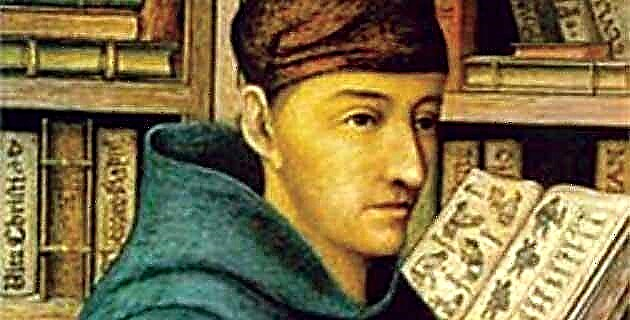
Fray Bernardino de Sahagún can be considered as the maximum researcher of everything that concerns the Nahua culture, dedicating his entire life to the compilation and subsequent writing of customs, modes, places, manners, gods, language, science, art, food, social organization, etc. of the so-called Mexica.
Without the investigations of Fray Bernardino de Sahagún we would have lost a large part of our cultural heritage.
THE LIFE OF FRAY BERNARDINO DE SAHAGÚN
Fray Bernardino was born in Sahagún, kingdom of León, Spain between 1499 and 1500, he died in Mexico City (New Spain) in 1590. His surname was Ribeira and he exchanged it for that of his native town. He studied in Salamanca and arrived in New Spain in 1529 with the friar Antonio de Ciudad Rodrigo and 19 other brothers from the Order of San Francisco.
He had a very good appearance, as stated by Fray Juan de Torquemada, who says that "the elderly religious hid him from the sight of women."
The first years of his residence were spent in Tlalmanalco (1530-1532) and then he was the guardian of the Xochimilco convent and, from what is conjectured, also its founder (1535).
He taught Latinidad at the Colegio de la Santa Cruz de Tlatelolco for five years from its foundation, on January 6, 1536; and in 1539 he was a reader in the convent attached to the school. Delivered to various tasks of his Order, he walked through the Valley of Puebla and the region of the volcanoes (1540-1545). Returning to Tlatelolco, he remained in the convent from 1545 to 1550. He was in Tula in 1550 and 1557. He was provincial definer (1552) and visitor of the custody of the Holy Gospel, in Michoacán (1558). Transferred to the town of Tepepulco in 1558, it remained there until 1560, passing in 1561 again to Tlatelolco. There it lasted until 1585, the year in which he went to reside at the Grande de San Francisco convent in Mexico City, where he remained until 1571 to return again to Tlatelolco. In 1573 he preached in Tlalmanalco. He was again provincial definer from 1585 to 1589. He died at the age of 90 or a little more, in the Grande Convent of San Francisco de México.
SAHAGÚN AND ITS INVESTIGATION METHOD
With a reputation as a healthy, strong man, a hard worker, sober, prudent and loving with the Indians, two notes seem essential in his character: tenacity, demonstrated in 12 decades of lavish effort in favor of his ideas and his work; and pessimism, which darkens the background of its historical scene with bitter reflections.
He lived in a time of transition between two cultures, and he was able to realize that the Mexica was going to disappear, absorbed by the European. He entered the complexities of the indigenous world with singular tenacity, restraint and intelligence. His zeal as an evangelizer moved him, since in possession of that knowledge he tried to better combat the indigenous pagan religion and more easily convert the natives to the faith of Christ. To his written works as an evangelizer, historian and linguist, he gave them various forms, correcting, expanding and writing them as separate books. He wrote in Nahuatl, a language that he possessed perfectly, and in Spanish, adding Latin to it. From 1547 he began to research and collect data about the culture, beliefs, arts and customs of the ancient Mexicans. In order to carry out his task successfully, he invented and launched a modern research method, namely:
a) He made questionnaires in Nahuatl, making use of the advanced students of the Colegio de la Santa Cruz de Tlatelolco in “romance”, that is, in Latin and Spanish, while they were experts in Nahuatl, their mother tongue.
b) He read these questionnaires to the Indians who headed the neighborhoods or partialities, who sent him elderly indigenous people who gave him invaluable help and are known as the Sahagún Informants.
These informants were from three places: Tepepulco (1558-1560), where they made the First Memorials; Tlatelolco (15641565), where they made the Memorials with scholia (both versions are identified with the so-called Matritenses Codices); and La Ciudad de México (1566-1571), where Sahagún made a new version, much more complete than the previous ones, always helped by his team of students from Tlatelolco. This third definitive text is the General history of the things of New Spain.
THE CURIOUS DESTINATIONS OF HIS WORK
In 1570, for economic reasons, he paralyzed his work, being forced to write a summary of his History, which he sent to the Council of the Indies. This text is lost. Another synthesis was sent to Pope Pius V, and is kept in the Vatican Secret Archives. It is called a Brief Compendium of the idolatrous suns that the Indians of New Spain used in times of their infidelity.
Due to the intrigues of the friars of the same Order, King Felipe II ordered to collect, in 1577, all the versions and copies of Sahagún's work, fearing that the indigenous people would continue to adhere to their beliefs if they were preserved in their language. . Fulfilling this final order, Sahagún gave his superior, Fray Rodrigo de Sequera, a version in the Spanish and Mexican languages. This version was brought to Europe by Father Sequera in 1580, which is known as the Manuscript or Copy of Sequeray and is identified with the Florentine Codex.
His team of trilingual students (Latin, Spanish and Nahuatl) was made up of Antonio Valeriano, from Azcapotzalco; Martín Jacobita, from the neighborhood of Santa Ana or Tlatelolco; Pedro de San Buenaventura, from Cuautitlán; and Andrés Leonardo.
His copyists or pendolistas were Diego de Grado, from the San Martín neighborhood; Mateo Severino, from the Utlac neighborhood, Xochimilco; and Bonifacio Maximiliano, from Tlatelolco, and perhaps others, whose names have been lost.
Sahagún was the creator of a rigorous method of scientific research, if not the first, since Fray Andrés de Olmos was ahead of him in time of his inquiries, he was the most scientific, so he is considered the father of ethnohistorical and social research Americana, anticipating two and a half centuries of Father Lafitan, generally regarded for his study of the Iroquois as the first great ethnologist. He managed to gather an extraordinary arsenal of news from the mouth of his informants, relating to the Mexican culture.
The three categories: the divine, the human and the mundane, with a deep medieval tradition within the historical conception, are all in Sahagún's work. Hence, there is a close relationship in the way of conceiving and writing his History with the work of, for example, Bartholomeus Anglicus entitled De proprietatibus rerum ... en romance (Toledo, 1529), a book very in vogue in his time, as well as with works by Plinio the Elder and Albertoel Magno.
SuHistoria, which is a medieval-type encyclopedia, modified by Renaissance knowledge and those of the Nahuatl culture, presents the work of various hands and various styles, since its team of students intervened from 1558, at least, until 1585 In it, his affiliation, with a pictographic tendency, to the so-called School of Mexico-Tenochtitlan, from the middle of the 16th century, with the “revived Aztec” style is perceived with meridian clarity.
All this abundant and magnificent information remained in oblivion, until Francisco del Paso y Troncoso - a profound connoisseur of Nahuatl and a great historian - published the originals preserved in Madrid and Florence under the title of Historia general de las cosas de Nueva España. Partial facsimile edition of the Codices matritenses (5 vols., Madrid, 1905-1907). The fifth volume, the first of the series, brings the 157 plates of the 12 books of the Florentine Codex that is kept in the Laurentian Library in Florence.
The editions made by Carlos María de Bustamante (3 vols, 1825-1839), Irineo Paz (4.vols., 1890-1895) come from a copy of theHistoriade Sahagún, which was in the convent of San Francisco de Tolosa, Spain. ) and Joaquín Ramírez Cabañas (5 vols., 1938).
The most complete edition in Spanish is that of Father Ángel María Garibay K., with the title General history of the things of New Spain, written by Bernardino de Sahagún and based on documentation in the Mexican language collected by the natives (5 vols., 1956).

